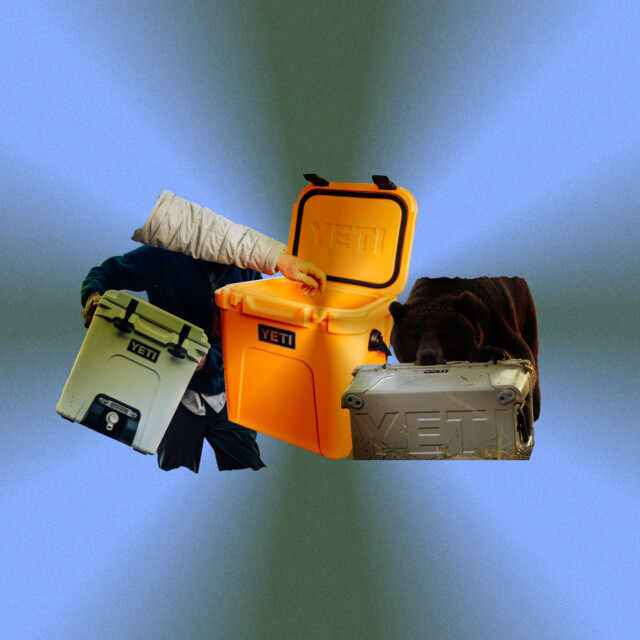It’s a sluggish, sweltering Saturday afternoon outside the Yeti store in Dallas, but inside, the Austin-based maker of high-performance coolers and drinkware is doing a brisk business. The Dallas store — one of just a dozen the 16-year-old company has rolled out since 2017 — isn’t huge or particularly flashy. Pyramids of Yeti’s signature hard-case coolers, neatly organized by color, stand freely in the interior space, while soft-sided cooler bags, rigid cargo cases, rugged tote bags, and a relatively new range of Yeti backpacks and luggage line the walls in similar chromatic groupings. Yeti’s top-selling drinkware is likewise arranged according to the brand’s current color palette — the plum- and blue-hued “Nordic Collection” dropped in late June, joining a spring release of three limited-edition pink, blue, and yellow colorways — creating a continuous color gradient that loops the space, connecting coolers to backpacks to drinkware to duffels.
Shoppers come and go a few at a time, leaving with $400 wheeled coolers, $55 water bottles, and $40 dog bowls. Nobody flinches at the prices, and almost no one leaves empty handed (an insulated beverage cup, starting at around 20 bucks, is a typical gateway drug for Yeti initiates). With back-to-school season in full swing, Yeti bags — a departure from the brand’s core competency of ice chests and drinkware — are in demand. “Parents are coming in and buying a lot of the smaller backpacks,” one of the sales staff says, “because they know they’re not going to be torn up in a year.”
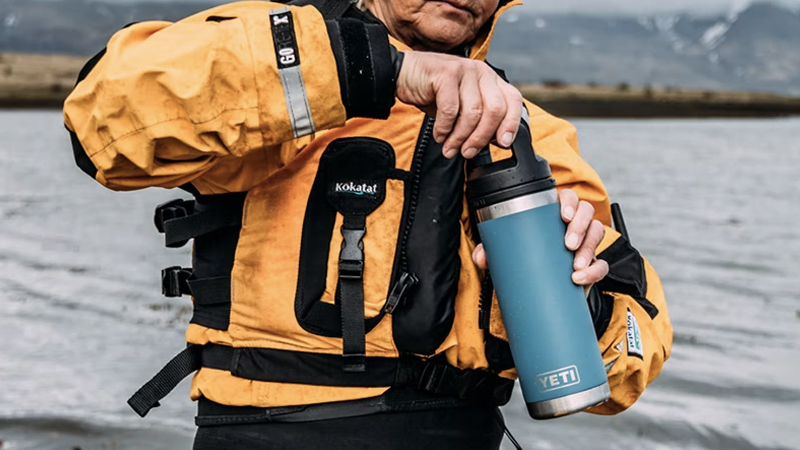
Yeti forged its reputation for indestructibility among the hunting and fishing enthusiasts who were its earliest adopters. But over the past several years the brand has evolved from a niche maker of premium-quality coolers to a full-on lifestyle brand — one with expanding product lines and a near cult-like following. Its core offering is a roto-molded, foam-insulated hard plastic cooler renowned for its ability to keep solid ice for days, even in the most severe summer heat. The largest and most expensive cooler retails for north of $1,000, and the appeal to the outdoorsy sporting crowd is obvious. “The product is pretty phenomenal,” says Paulie Dery, Yeti’s chief marketing officer. “Once you use it, you’re hooked.”
But one look around the Dallas Yeti store — located in a ritzy shopping district just north of downtown — underscores the brand’s ever-broadening appeal. Before Yeti, no one seriously entertained the notion that soccer moms, college students, and weekend leisure boaters might all stand in line together for the opportunity to spend $300 (or much more) for a cooler or $35 for an insulated coffee mug. Now they do so enthusiastically, lured by the promise of beer that never gets lukewarm, coffee that never gets cold, and ice that seemingly never turns to slush.
In 2012, Yeti had 20 employees, 11 SKUs, and finished the previous year with roughly $29 million in sales. In just a decade, net annual sales have grown to roughly $1.5 billion (over the last 12 months) and the company now staffs more than 900 employees, according to company data. Between its reputation for top-tier performance and an understated, never-trying-too-hard identity, Yeti has evolved beyond a brand aimed at any one community or lifestyle into one that resonates with anyone who enjoys a cold drink.
‘The Cooler You’d Use Every Day if It Existed’
Brothers Roy and Ryan Seiders brought the first Yeti cooler to market in 2006, aiming to capture a small sliver of a segment they both knew well. Both avid anglers, they wanted a cooler that would keep their food and drink as well as their catch cold for longer periods, ideally for a few days rather than a few hours. And, having suffered more than one broken cooler handle or busted hinge, they wanted something extremely durable, something an adult could stand atop without collapsing its lid, for instance. Nothing on the market met their criteria, so they engineered a cooler that did — “the cooler you’d use every day if it existed,” according to company lore.
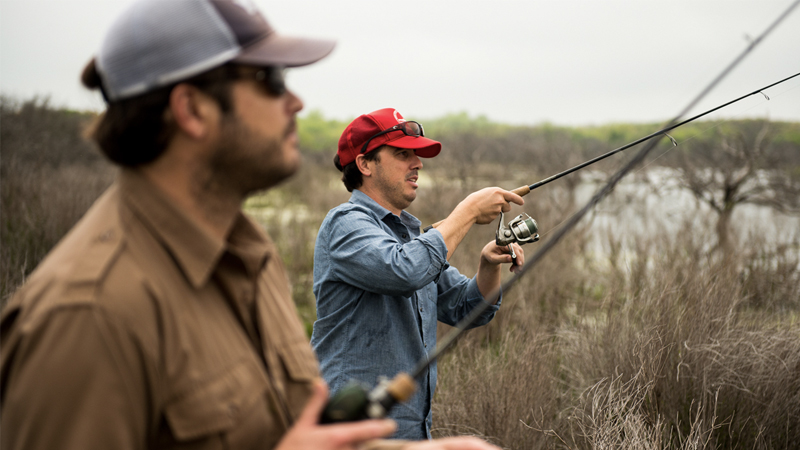
That cooler proved costly to produce but it worked, and the Seiders launched their first Yeti cooler (price tag: $250-$300) targeting the customer they knew best. Its initial uptake by sport fishing and hunting communities makes for a critical piece of the Yeti story. Word about the new coolers spread not through traditional marketing — of which there was little — but through these communities, which were at the same time enjoying widespread growth and a ballooning social media presence. “Yeti became this brand that was far more than just a cooler because all of the fly fishing guides were using Yeti products,” says A.J. Gottschalk, a photographer and consultant with a decade of experience working with brands in the fly fishing space. “It’s omnipresent. Fly fishing and Yeti go hand in hand at this point.”
Adjacent outdoor-oriented communities began taking notice of the cooler’s unparalleled ability to maintain ice, and its presence continued to spread. Yeti’s coolers, and soon after its drinkware, became de rigueur among climbers, hikers, campers, ranchers, farmers, skiers, long-haul truckers, first responders — basically anyone who found themselves away from home for long stretches of time, through leisure or profession. The culinary and beverage worlds soon took notice as well.
“We started in fishing, and we then found our way into the ranching world, which led us into the outdoor backcountry climbing and snowboarding worlds, and then that crowd found the whitewater world, who then found the coasts with surf and skate, and that kind of found barbecue, and barbecue found beer,” Dery says. “It’s these micro-connections that have become the amplification of the brand, and that’s really hard to replicate.”
In other words, a really good cooler with authentic outdoor bona fides sells itself.
An Ice Chest, but Make It Fashion
Yeti’s well-earned reputation for high-performing products allows it to eschew most traditional advertising, instead relying on a network of brand ambassadors and low-key event sponsorships that maintain its relevance within these communities. Its roughly 150 ambassadors range from rodeo cowboys to spearfishers to barbecue pitmasters to brewers, each well known within their niches but none of them celebrities.
The brand demands no social media posts or special appearances from its influencer partners but simply tries to support them in whatever they do. “In our ambassador contracts, there is zero mention of what they have to do for us, and I think that’s why our relationships with them are so strong,” Dery says. If an ambassador happens to keep a Yeti cooler aboard his fishing boat or cap off a long day of climbing by building a cocktail in her Yeti tumbler, and if that then happens to end up in an ambassador’s social media post, well, that’s their business.
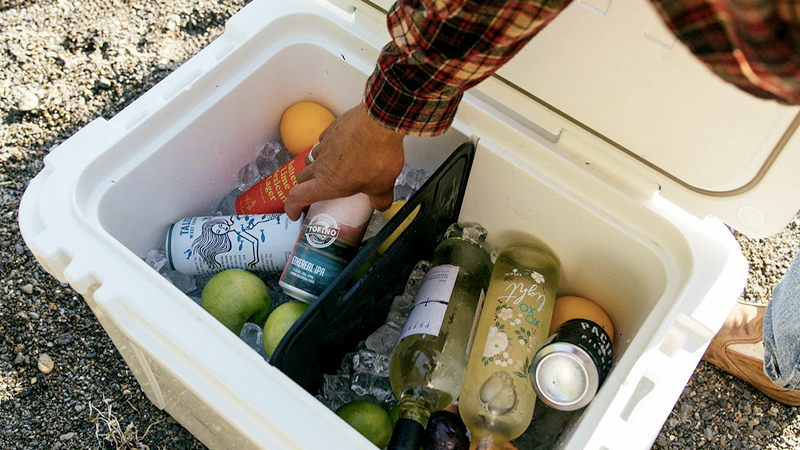
This understated approach also allows Yeti to get out of its own way and let its products speak for themselves — something they do remarkably well. “The products are an excuse to stay out doing what we love for longer,” Dery says. And while not everyone is a semi-pro fly fisher or one of the world’s premier bow hunters, who doesn’t enjoy an ice-cold beverage that stays ice cold?
By allowing consumers to find the brand organically — often through someone they know or through its growing presence in one outdoor community or another — Yeti has managed to maintain its authenticity even as its products become more and more mainstream. Ice chests and insulated drinkware, no matter their aesthetic design, lack any real intrinsic sexiness. And so Yeti’s entire marketing strategy rests on not trying too hard. Rather, the company lets real people who are doing real things — typically backdropped by the grandeur of the great outdoors — imbue the brand with a kind of cultural cachet that money simply can’t buy.
That hasn’t stopped consumers from spending a good deal of cash trying to own a small piece of it. Yeti’s second quarter earnings report shows the company netted $420 million in sales in the second quarter of this year, up 17 percent from the year prior, with drinkware leading the way. While Yeti’s coolers have by no means lost their cool (sales of coolers and equipment grew by 23 percent year-over-year for the most recent quarter), drinkware now makes up slightly more than half of Yeti’s sales. For the brand’s devotees, it’s not just about owning a high-quality coffee cup. When special limited-edition product drops hit the Yeti web site, fans swarm. Certain limited releases — its hard-to-find camouflage-clad drinkware is particularly popular — end up selling for hundreds of dollars on the secondary market, putting Yeti’s disciples in the same league as obsessive sneakerheads bidding up the price of a rare pair of Yeezys.
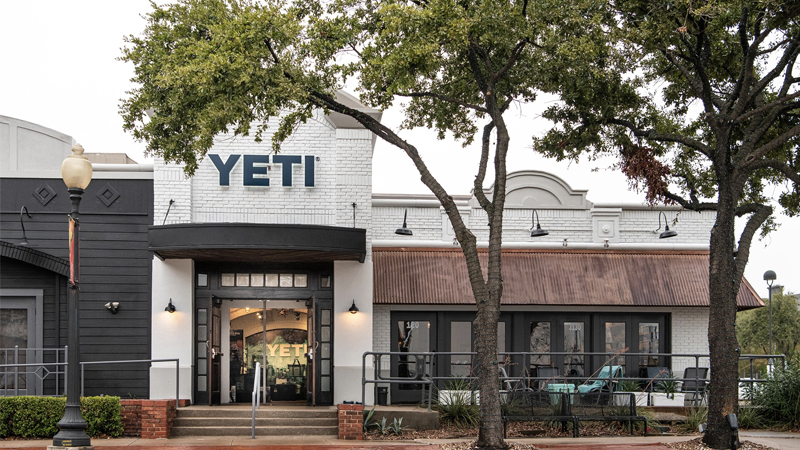
The connection Yeti has fostered with its legion of fans pays off for the brand both in terms of organic word-of-mouth marketing and in terms of profit margins. When the Seiders brothers launched the first Yeti coolers in 2006, they had to convince retailers to put a wildly expensive cooler on store shelves just to get it in front of consumers. Nearly a decade later, direct-to-consumer (DTC) sales made up just 8 percent of the company’s revenue. Fast forward to the past 12 months, and that number was 55 percent. Consumers seek out Yeti products so eagerly that the company recently announced it is cutting wholesale distribution to some retailers like Lowe’s to focus on its DTC channel as well as international markets, where sales grew 35 percent year-over-year in the second quarter.
It’s enough to make one wonder why Dallas needs a Yeti store at all. Dery says the retail locations serve as important touch points for consumers in areas where the brand already has a devoted following (like Dallas) or in geographies where Yeti does not yet have much of a presence (its newest store in Carlsbad, Calif., is the first on the West Coast). But Yeti would much rather meet its consumers where they want to be, which is typically outdoors and often far from the strip malls of suburbia, even if its products sell just as well in both places. “We could probably throw ourselves into a shopping mall with all of the foot traffic and all of those fancy metrics, and let the coolers rip all day,” Dery says. “But that’s not Yeti. And if you think it is, you don’t get Yeti.”
This story is a part of VP Pro, our free platform and newsletter for drinks industry professionals, covering wine, beer, liquor, and beyond. Sign up for VP Pro now!
